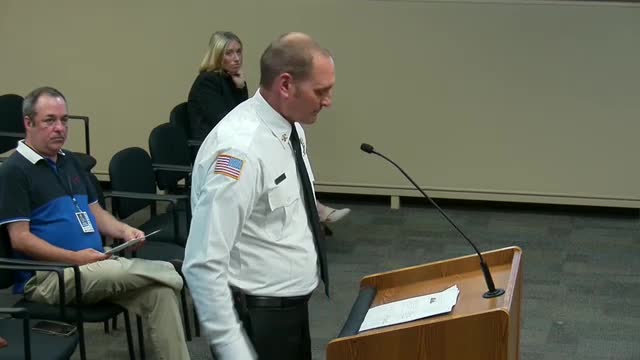Fire Department Faces Apparatus Crisis Amid Rising Call Volume
August 05, 2024 | Bartlesville, Washington County, Oklahoma

This article was created by AI summarizing key points discussed. AI makes mistakes, so for full details and context, please refer to the video of the full meeting. Please report any errors so we can fix them. Report an error »

During a recent government meeting, fire department officials presented a comprehensive review of their apparatus inventory and replacement strategy, highlighting the urgent need for updated equipment to meet increasing call volumes and industry standards.
The discussion began with an overview of the current apparatus, revealing that some vehicles in service date back to 1986. The officials emphasized the importance of adhering to industry standards set by Underwriters Laboratories (UL), which recommend a lifespan of 15 to 20 years for fire engines and 15 to 25 years for aerials, contingent on their performance in annual pump tests. The department has faced challenges in maintaining reserve apparatus, often relying on more expensive aerials for emergency medical service calls, which is not ideal for budget management.
The meeting underscored the rising call volume, with projections indicating a steady increase in incidents. Station 3, in particular, has been identified as the busiest, necessitating a more strategic approach to apparatus replacement. The officials proposed a shift in focus from replacing individual vehicles to a more integrated solution that combines the functions of a tanker and engine into a single unit, thereby optimizing resources and reducing costs.
A significant point of discussion was the recommendation to replace Quint 3, a 1998 model, with a used aerial truck. This decision stems from lengthy wait times for new vehicles, with some manufacturers citing build times of up to 47 months. The department aims to avoid a backlog in apparatus replacement by considering refurbished equipment, which can come with warranties and immediate availability.
The budget for this year includes $700,000 initially earmarked for a commercial cab tanker. However, officials clarified that this funding could be better utilized by purchasing a custom pumper with a larger water tank, effectively addressing two needs with one vehicle. The apparatus committee, consisting of various department members, has endorsed this approach, which aims to create a predictable replacement schedule for all equipment, including SCBA and bunker gear.
The meeting concluded with a commitment to keep the council informed as the department moves forward with its revised strategy, emphasizing the importance of maintaining a reliable fleet to ensure public safety and efficient emergency response.
The discussion began with an overview of the current apparatus, revealing that some vehicles in service date back to 1986. The officials emphasized the importance of adhering to industry standards set by Underwriters Laboratories (UL), which recommend a lifespan of 15 to 20 years for fire engines and 15 to 25 years for aerials, contingent on their performance in annual pump tests. The department has faced challenges in maintaining reserve apparatus, often relying on more expensive aerials for emergency medical service calls, which is not ideal for budget management.
The meeting underscored the rising call volume, with projections indicating a steady increase in incidents. Station 3, in particular, has been identified as the busiest, necessitating a more strategic approach to apparatus replacement. The officials proposed a shift in focus from replacing individual vehicles to a more integrated solution that combines the functions of a tanker and engine into a single unit, thereby optimizing resources and reducing costs.
A significant point of discussion was the recommendation to replace Quint 3, a 1998 model, with a used aerial truck. This decision stems from lengthy wait times for new vehicles, with some manufacturers citing build times of up to 47 months. The department aims to avoid a backlog in apparatus replacement by considering refurbished equipment, which can come with warranties and immediate availability.
The budget for this year includes $700,000 initially earmarked for a commercial cab tanker. However, officials clarified that this funding could be better utilized by purchasing a custom pumper with a larger water tank, effectively addressing two needs with one vehicle. The apparatus committee, consisting of various department members, has endorsed this approach, which aims to create a predictable replacement schedule for all equipment, including SCBA and bunker gear.
The meeting concluded with a commitment to keep the council informed as the department moves forward with its revised strategy, emphasizing the importance of maintaining a reliable fleet to ensure public safety and efficient emergency response.
View full meeting
This article is based on a recent meeting—watch the full video and explore the complete transcript for deeper insights into the discussion.
View full meeting
